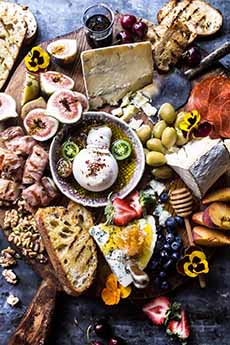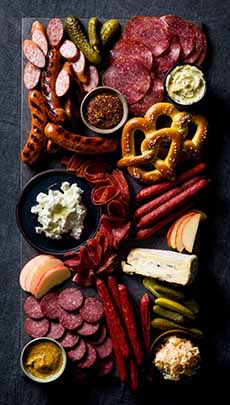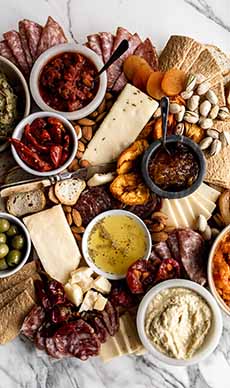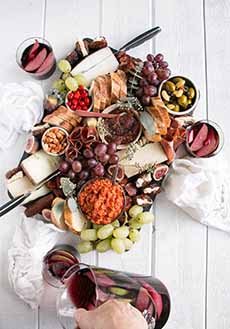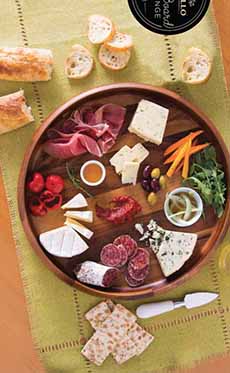Cheese & Charcuterie Boards: The Difference & How To Make Them
|
|
One of the easiest ways to entertain is with beer, cocktails, and/or wine and a cheese board. Or a charcuterie board. What’s the difference? Simply stated, a cheese board is cheese plus accompaniments (fruit, condiments, bread, etc.). A charcuterie board can be meat and accompaniments-only or can include cheese as well. A bit of history: Cheese. According to the Dairy Farmers Of Wisconsin trade association, cheese has been around for many centuries, potentially dating back to 1200 B.C.E. (Most recently, in 2018, a salty cheese similar to feta was found in a 3,200-year-old Egyptian tomb. Here’s more history of cheese. Charcuterie. Charcuterie, on the other hand, is a more recent invention—relatively speaking. While using salt to cure meats dates back to the Roman Empire (625 B.C.E. to its fall in 476 C.E.), the concept of a modern-style platter of different cured meats was pioneered in 15th century France. Literally, charcuterie means pork-butcher’s shop, from Middle French chaircuiterie, from chaircutier, pork butcher, from chair cuite, cooked meat. It is both the name for the shop and its products. It was (and is) the charcutier’s skill that turned a butchered pig into bacon, ballotines*, confit, galantines*, ham, pâtés, rillettes‡, sausages, and terrines†. Given the French breadth of cheesemaking, it likely didn’t take long to add cheeses to a plate of cured meats, along with some delicious French bread, fresh and dried fruits, nuts, and condiments. While condiments included such standards as mustard, mostarda, and savory jams (e.g. onion, tomato), straight sweetness was introduced via sweet jams, honey, and membrillo (quince paste fron Spain). Much more has been added since then. Today, you can find an even greater variety of goodies on charcuterie boards: They can serve as brunch, lunch, or a light dinner. You simply assemble the ingredients: no cooking required! Charcuterie boards are also a great complement to wines of all types. While Greece and the Middle East have pastirma (also spelled basturma, highly seasoned, air-dried cured beef), sujuk (dry, spiced sausage), feta, halloumi, labneh, and much more to snack upon, they have a focus on mezze (a great idea for a brunch, lunch, dinner, or party). But other countries provide ways to create charcuterie boards from their meat and cheese specialties. Here are three of them. > The Different Types Of Cheese > More Cheese Condiments *A ballotine is traditionally a de-boned thigh and/or leg part of a chicken, duck, or other poultry. It is stuffed with forcemeat (ground or sieved meat and other ingredients), which can include ground pork. A galantine is a dish of boned stuffed meat, typically poultry, that is usually poached and served cold, often covered with aspic. Galantines are often stuffed with forcemeat (which can include pork) and pressed into a cylindrical shape. The difference: A galantine is usually cylindrical in shape, making it easier to slice. Galantines are also usually wrapped in cloth and poached in their own stock. Ballotines can be either poached or braised and are usually served in a broth made from leftover cooking liquid. †A terrine is a meat, fish, or vegetable mixture that has been cooked and set in an oblong shape container. It is typically unmolded and served in slices. ‡Rillettes are pork or other meat or fish, preserved with a method similar to confit, where the meat is seasoned then slow-cooked submerged in fat, and cooked at an extremely slow rate for several hours. The meat is then shredded, packed into containers, and covered in fat. |
|
|
CHECK OUT WHAT’S HAPPENING ON OUR HOME PAGE, THENIBBLE.COM.
|
||
